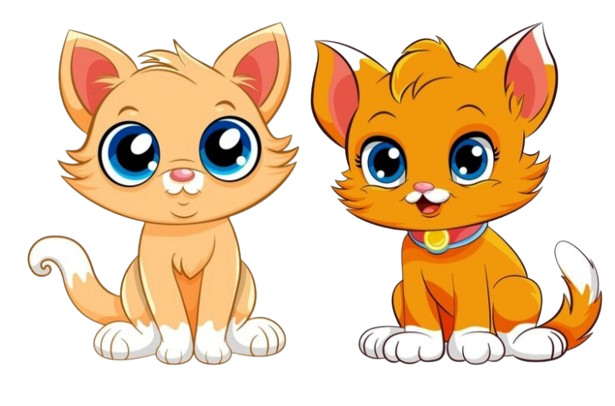European Shorthair
History/Profile of
The European shorthaired cat, although it has a very ancient
history, strictly speaking, is not aboriginal, although it is very similar to
individuals who lived many centuries ago in Europe. It can be said that it
carries the genes of ancient cats, which still Roman legionnaires brought from
Egypt, and then distributed almost all over Europe. That is, unlike other cats,
there has been uncontrolled mating with many other breeds for centuries because in Europe it is one of the most common breeds.
Based on the European shorthaired cat, was bred American
short-haired, However, the latter is larger in size. In the middle of the 20th
century, breeders from Northern Europe, namely from Denmark, Sweden, and Norway,
were interested in the development and improvement of the European shorthair
breed. In the process of breeding, British shorthair gave its
results, reflecting on the structure of wool, and on the limbs and backbone.
At first, the breed was called a Swedish domestic cat, as,
pets, today bearing the name of British shorthair, in 1946 were still called
European shorthair. I mean, the name was busy. Subsequently, English breeders
came up with the name British short-haired, and teleological organizations
still recognized the Swedish domestic cat, which changed the name to the European
shorthair, as a separate breed.
This first happened in 1982, with the filing of the
organization FIFe, although the division of the British shorthair and European
shorthair cat occurred a year earlier. However, disputes about the independent
existence of the breed European shorthaired cat, exist to this day. In
particular, many felinological organizations of Russia and the CIS consider
these cats to be non-breeding, with which their foreign colleagues often
disagree.
Characteristics of the European shorthair cat breed
Adaptability 07/10
Attachment to the family 10/10
Gaming activity 08/10
intelligence 08/10
General health 05/10
Wool fallout 09/10
Friendliness to children 08/10
Friendly to dogs 10/10
Love for meows 02/10
European shorthair Breeders information
|
The Origin |
Sweden |
|
lifetime |
15-20 years old |
|
size |
medium-large |
|
weight |
Cats: 6-8 kg, Cats: 4-6 kg |
|
The type of wool |
shorthaired |
|
Color |
any colors and drawings of wool |
|
lifestyle |
Outdoors / indoors |
|
price |
|
Description of European shorthair
If you are looking for a kind, intelligent, loyal and
affectionate pet, the European short-haired cat best meets these requirements.
At the same time, keep in mind that these animals usually do not cost fabulous
money, while having a beautiful appearance and a wide variety of colors. They
combine the best qualities of domestic cats.
Usually, these are large pets and weigh about 5 kg, and
females are smaller than males. The torso is strong, muscular, the paws are a
little elongated, strong, the muzzle at the figurative shape, ears of medium
length. In general, the European cat gives the impression of a strong, healthy
animal. The average life expectancy is about 15 years, but good care can
increase this figure.
The Personality of European shorthair
European short-haired cats are always active, cheerful, and
even as adults love to play. There is one feature - a plastic, adaptive
personality absorbs the qualities of the owner, like a sponge. That is, it is
possible that it will have your character and temperament.
These are ideal family pets, they are friendly simply by
nature, and always happy if a person shows love and affection, responding in
the same way. They are rarely "talkative" unless the owner will
constantly talk to his pet, and at some point, he will simply begin to respond
in his cat language.
Despite the fact that the European short-haired cat has good
intelligence and is generally smart, it does not have a very good memory.
Chances are you won't be able to train any teams. Separation from its owner,
the animal is going through hard, however, can be alone if you are not home for
a while during the day.
They are kind, affectionate, normally perceive children and
strangers. Innate natural instincts are not atrophied, and therefore with mice
in your country, most likely, there will be no problems. You can have another
cat or a dog, and this will not be a problem, but birds and hamsters
should not start, because the cat can simply eat them.
Common Diseases
In general, the breed is considered healthy, however, since
the genes have a huge number of impurities, sometimes there are some deviations
that are almost impossible to predict.
How to take care of European shorthair
In this respect, everything is simple, especially, given the
fact that the European cat is one of the most unpretentious breeds in food.
Scratch your pet once a week, 3 times a week to brush your teeth, once every
two months to bathe, and 2-4 times a month to prune the claws. Ears and eyes are
cleaned as needed.



